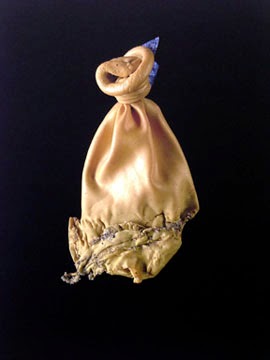On the radio this morning Richard (hopefully) entertained KWMR listeners (hopefully) with three of his stories on Elia Haworth's program Original Minds. His story about Robinson Jeffers—one of the first 20th Century poets to point out our ecological profligacy—had these these lines, from 1924:
While this America settles in the mould of its vulgarity, heavily thickening to empire
And protest, only a bubble in the molten mass, pops and sighs out, and the mass hardens,
I sadly smiling remember that the flower fades to make fruit, the fruit rots
to make earth….From Shine, Perishing Republic
Richard regularly posts his stories to his blog 90 OJIME. You can hear a podcast @ http://www.kwmr.org/show/124…it should be posted later this week. Look for the October 11, 2014 show.
Since we began the day with an early-call arrival at the broadcast booth, a bit off our usual, we decided it was OK if we went around the back side of Kehoe Marsh to the beach. We always, always hike the direct trail, arriving at Kehoe from what we call the "front" side where we scramble up the headland to take a photo of the beach from the same place every time. In a exercise of observing the seasonal changes, we have hundreds of images from that vantage point. There is something to be said for traveling the well-worn path, the exact route, though something may be lost, (who doesn't thrill to discovering the "new"?), there is something gracefully subtle in being in these exact spots 345 times (Judith's records) 614 times (Richard's records). (The term for Richard's writing is Creative Non-fiction, after all).
But, in the interest of exploration, we hiked through the thickets of reeds and rushes. Through this dense undergrowth we could hear the flitting and the "pink" call of the Red-winged Blackbird. "Pink, pink, pink, pink." We couldn't see 'em, but we are surrounded. "Pink. pink, pink"…so alive with sound. Amplified by the sandstone cliffs of the narrow canyon we're traveling through, the crashing wave sounds are roaring like jets.
As we come out to the open beach, there is a small group from a class on tracking, hunkered down by the dunes examining the scurryings of black, glossy darkling beetles in the sand. Easily spotted but protected by their willingness to spritz a stink in the face of any who'd want to nibble. Stink bugs. In this tracking class we spotted Ellery Akers, famed North Coast artist, writer, naturalist. While searching for a link to her fine work we discovered Long Distance: England that includes a blackbird.
Typically the marsh flows all the way to the sea. But because of the drought it stops short. And on this day the beach face seems exceptionally wide — tufts of seaweed with a few larger pieces of plastic are the first harbingers of the seasonal wave pattern and variation in current that brings rain (and plastic). Rain is forecast (hope, hope) for next week.
Looking like the marching advance guard of the plastic onslaught to come, this piece is a wad from inside a shotgun shell. We always find them and have 1000's in our inventory.
The glint of plastic bag is always an eye catcher. Upon closer inspection this pile of debris was mash-up of transparent plastic wrap and Velella velellas or by-the-wind sailors as they are more poetically named. They are colonial jellyfish related to the Portugese Man-0-War. While Judith was taking this snap, a sneaker wave washed in, taking her precious bag of collected treasures back out to sea. Luckily, Richard had his shoes off and in a sprint, splashed in to the rescue. How funny just how seriously we feel about this trash gathering. Trash rising on the semiotic escalator toward value.
From the top of the hill, usually our starting point, we're can clearly see the stretch of the marsh creek not quite meeting the long finger of the wave washing in. Is this some pean to Michelangelo's Creation of Adam? Such longing we have for the benediction of rain.
Balloons, rubber, and these days, more often, mylar, have joined the taxon of "We-find-'em-every-visit." Who doesn't like celebrating birthdays, graduations, etc? As in this case letting someone know "you're so special." But now that there are over 7 billion "so special" people on the planet, maybe it's time to re-think how we let our loved ones know. Balloons are a killing snack for marine life.
There will be an art exhibit focused on plastic for the 2016 Olympics in Brazil. We are proposing large, bigger than human scale, photographs of balloon debris called Balloon Samba. Sooner and closer to home we are offering artist proof prints of two of our dancers in Collect! a benefit auction for the Berkeley Art Center.





